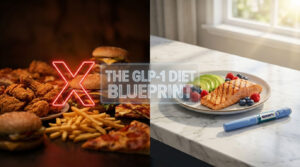What is Neonatal Conjunctivitis?
Neonatal conjunctivitis, also known as ophthalmia neonatorum, is an eye condition affecting newborns. Conjunctivitis in babies is on a rapid rise this monsoon, and as a parent to a newborn or a toddler, you are right to be worried about your little one’s eye health. This eye condition can be equally painful for the babies and scary for the parents and caregivers. It is an infection of the conjunctiva, the membrane that surrounds the eyelids and eyeballs. While most pink eye symptoms in babies go away within 1 or 2 weeks, in some instances, the condition may worsen, and your baby might have other health complications along with teary, neon-pink eyes, constant itchiness and temper tantrums.
Common Types of Neonatal Conjunctivitis and Their Characteristics
You will be able to help your newborn or toddler with conjunctivitis newborn symptoms only when you recognise the symptoms on time. Your paediatric ophthalmologist can help gauge the type of newborn conjunctivitis by analysing the symptoms.
Mentioned below are few major types of Pink Eye in babies:
Inclusion (Chlamydial) Conjunctivitis
Chlamydia bacteria are known to predominantly cause inclusion conjunctivitis and genital infections in newborns and toddlers.
- Cause: Caused by Chlamydia trachomatis, which also leads to genital infections (chlamydia).
- Transmission: Passed from an untreated infected mother to her baby during childbirth.
- Symptoms:
- Redness of the eye(s)
- Swelling of the eyelids
- Pus discharge
- Onset: Typically appears 5 to 12 days after birth, but can manifest earlier if the amniotic sac ruptures during delivery.
- Additional Impact: Some infants may have the infection in other body parts, such as the lungs and nasopharynx.
Gonococcal Conjunctivitis
- Cause: Result of Neisseria gonorrhoeae, the bacterium responsible for gonorrhea.
- Transmission: Passed from an untreated infected mother to her baby during childbirth.
- Symptoms:
- Red eyes
- Thick pus accumulation in the eyes
- Swelling of the eyelids
- Onset: Typically emerges within the first 2 to 5 days of life.
- Potential Complications: Can progress to serious infections like bacteremia and meningitis in newborns.
Chemical Conjunctivitis
- Cause: Triggered by irritation due to application of eye drops given to newborns for preventing bacterial infection.
- Symptoms:
- Mild redness of the eye(s)
- Eyelid swelling
- Duration: Symptoms usually resolve within 24 to 36 hours without lasting effects.
Other Neonatal Conjunctivitis
- Cause: Caused by various viruses and bacteria aside from Chlamydia trachomatis and Neisseria gonorrhoeae.
- Transmission: Viruses can be passed from mother to baby during childbirth.
- Symptoms:
- Include red eyes
- Swollen eyelids
- Pus formation
Symptoms of Pink Eye in Babies
Though the pink eye is a common eye infectious condition, not all babies are susceptible to it, and your baby might just be the lucky one. Only 2% of newborns are reported to develop conjunctivitis during their first few weeks of life. However, toddlers are more prone to develop this condition as they keep rubbing their eyes involuntarily, and the germs and irritants on their skin and hands can transfer to the eyes and cause conjunctivitis in toddlers.
As a parent or caregiver, it is important that you watch out for any warning signs or prevailing symptoms of conjunctivitis in newborns and toddlers. Your baby is not going to have a swollen eyelid, watery discharges and a neon-pink-shaded eyeball overnight. The symptoms are usually evident in the early stages.
These are some of the common baby conjunctivitis symptoms that you should be watching out for.
- Swollen and painful eyelids
- Constant itchiness or irritation – Your newborn or toddler might not be adequately expressive. So, if you observe them cry for long and through tantrums or rub their eyes constantly, you should get their eyes checked out for on-time diagnosis, prevention and treatment.
- Excessive blinking
- Extreme sensitivity to light (bright light)
- Squinting of eyes
- Any sore or boil on the eyelid – This is a serious symptom, and you should get your little one checked out by your paediatric ophthalmologist.
Causes of Pink Eye in Babies
Bacterial and viral infections, allergies, environmental irritants and a host of causes can lead to conjunctivitis in babies.
Other key causes of pink eye in babies are:
- A blocked tear duct can cause inflammation in the conjunctiva
- Constant use of eye drops for newborns and toddlers to treat any preexisting eye health symptoms
- Viral or bacterial infection transferred from the mother to the newborn during birth
- Asymptomatic mothers can also pass on pink eye-causing bacteria and viruses to their newborn
- Epiblepharon – This is a condition in which the lower eyelid and lashes roll inwards and tend to irritate the eye. This can also cause newborn conjunctivitis.
- Eye trauma – It can occur during birth, or toddlers can injure their eye membrane with constant scratching or toys
- Congenital glaucoma – Though quite rare, this condition can also lead to pink eyes in babies.
How to prevent Pink Eyes in Babies?
‘Prevention is better than cure’, and prevention is always better than care when it comes to your little bundle of joy. Your little one’s immune system is still developing and evolving, and it’s a critical time for them to stay away from potential infections and other health hazards. While some infections might boost your little one’s immunity, some can be life-threatening too.
You can choose to prevent conjunctivitis in your baby by administering time-tested precautionary measures.
- Encourage your little one to avoid touching his/her face and eyes
- Avoid sharing eye care products with others
- Encourage proper hand hygiene practices
- Educate your toddler to avoid touching his/her friends’ faces and being touched too
- Offer a temporary break of a few days for your toddler from daycare or school if he/she has pink eye symptoms
Complications and Risks Associated with Neonatal Conjunctivitis
While most cases of conjunctivitis in babies go away with time and with proper medical administration, there are high chances of recurrence.
When left undiagnosed and untreated, baby conjunctivitis can result in
- Corneal ulceration – Corneal ulcers are open sores on the eye’s clear front surface, caused by untreated conjunctivitis. They lead to pain, discomfort, and impaired vision.
- Ocular globe perforation – If conjunctivitis worsens, the eye’s structure can weaken, potentially causing the eyeball to develop holes or rupture, necessitating immediate medical attention.
- Permanent blindness – Severe conjunctivitis can damage the cornea and retina, leading to irreversible vision impairment or blindness.
- Sepsis – Neglected conjunctivitis-causing infections can spread to the bloodstream, causing sepsis, a life-threatening condition with organ dysfunction and shock.
- Bacterial meningitis – The infection from conjunctivitis can extend to the brain’s membranes, causing bacterial meningitis, characterized by severe symptoms like high fever and altered mental state.
As a parent, you should keep these complications and risks in perspective and watch out for your little one, who might be at risk of developing pink eye symptoms.
What to do at home if your baby has pink eyes?
Seeing your little one in pain and tending to them can be physically and emotionally overwhelming. While there are several treatment measures for conjunctivitis in babies, you can still rely on age-old home remedies and practices to ease the pain for your baby.
- Ensure you, other family members and your baby have requisite hygiene around them.
- Prevent your baby from scratching or rubbing his/her eyes, as it’s going to further aggravate the problem.
- Try either hot or cold compresses periodically to help ease the pain and swelling in the eye.
- You can also administer doctor-recommended eye drops or fake tear products to help your child manage his/her pain.
That said, home remedies should not be biassed by myths. It’s a common myth that putting breast milk in the baby’s eyes can help heal infections. It’s definitely not a substitute for antibiotics and other treatments, and there are other bacterial agents in breast milk which may lead to other health ailments.
When to Consult a Doctor for Your Baby’s Pink Eye?
While most symptoms fade away within 2 weeks, you should go see the doctor if your baby:
- has any sort of trauma to the eye
- Is unable to keep the eyes open
- Has extreme sensitivity to bright light
- Has blisters or crusts around the eyes
Medical Treatments for Neonatal Conjunctivitis
Confused about how to treat conjunctivitis in babies? Here are some of the key neonatal conjunctivitis treatment measures.
- Oral antibiotics are usually administered to treat inclusion or chlamydial conjunctivitis in newborns and toddlers
- Intravenous (IV) or Intramuscular (IM) antibiotics are the key baby conjunctivitis treatment measures for gonococcal conjunctivitis
- There are no proven treatments for chemical conjunctivitis. So, it’s recommended to keep babies away from harm-causing chemical agents.
- For virus-driven conjunctivitis, there are no treatments, and antibiotics won’t deliver the desired result. So, prevention and care is the ideal way out here.
Note From HealthcareOnTime
In the journey of parenthood, every concern for our little ones matters. Neonatal conjunctivitis, though common, demands our attention. Your vigilance is the shield that protects your baby’s bright eyes. With the power to recognize symptoms and seek timely medical aid, we stand guard against any harm. Embrace this knowledge, cherish those tiny eyes, and nurture your newborn’s well-being. After all, in every blink lies a world of love and care.
Sources
Ref Links:
- https://www.cdc.gov/conjunctivitis/newborns.html
- https://www.healthline.com/health/baby/pink-eye-in-babies
- https://www.stanfordchildrens.org/en/topic/default?id=conjunctivitis-in-children-90-P02078
- https://www.ncbi.nlm.nih.gov/books/NBK551572/
- https://www.medicalnewstoday.com/articles/327078#is-it-contagious








